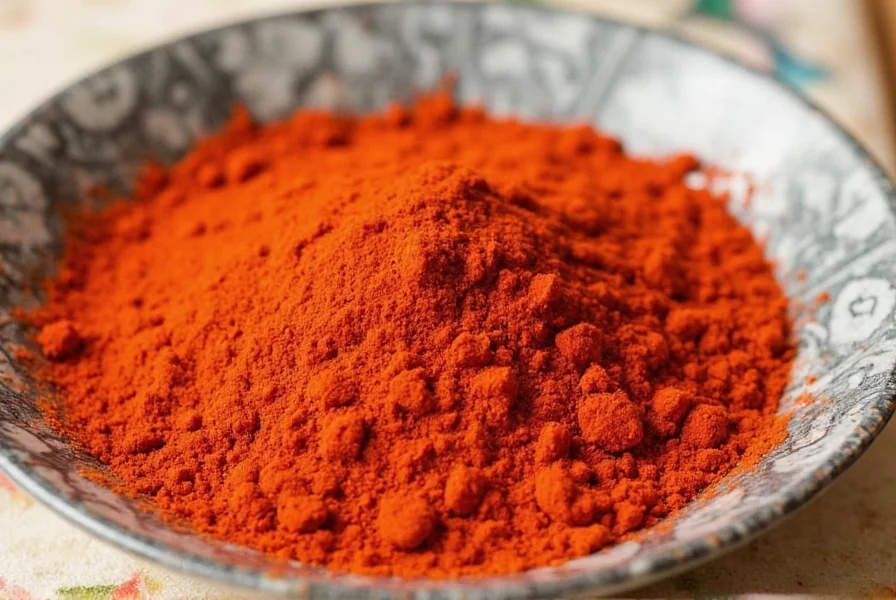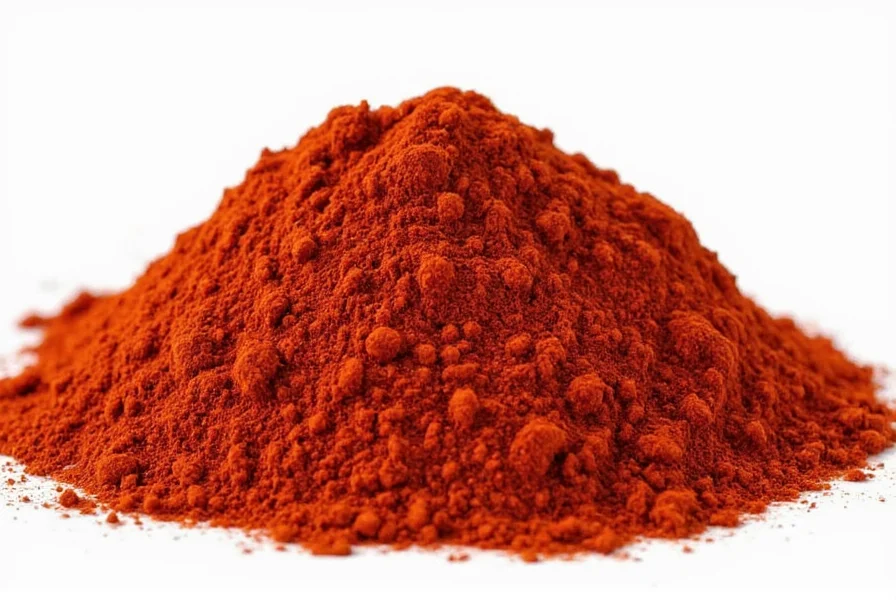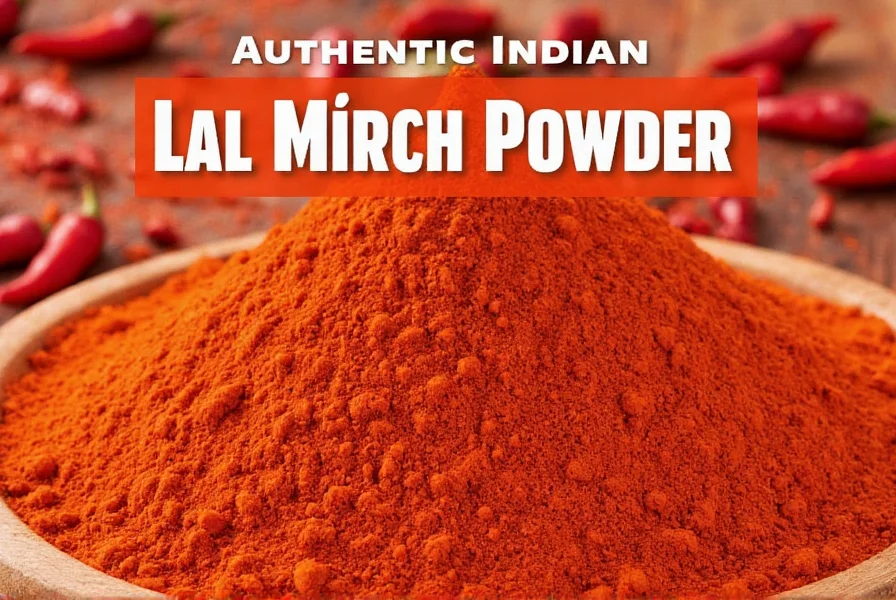Lal mirch powder forms the fiery heart of Indian cooking, delivering both color and heat that defines countless traditional dishes. This essential spice goes by many names including lal mirchi powder, desi lal mirch, and simply red chili powder in Indian grocery contexts. Understanding its proper use separates authentic Indian cooking from generic interpretations.
What Exactly Is Lal Mirch Powder?
The term "lal mirch" translates directly from Hindi as "red chili." Authentic lal mirch powder contains only dried, ground red chilies—typically varieties like Guntur Sannam, Kashmiri, or Byadgi—without any additional ingredients. This distinguishes it from Western-style "chili powder" which usually contains a blend of ground chilies plus cumin, garlic powder, oregano, and other spices.
Traditional lal mirch production involves sun-drying ripe red chilies until completely dehydrated, then grinding them into a fine powder. Artisanal producers often use stone grinders to preserve flavor compounds that high-speed commercial grinders might destroy through heat generation.
Key Differences Between Lal Mirch and Other Chili Powders
| Spice Type | Ingredients | Heat Level (SHU) | Primary Culinary Use |
|---|---|---|---|
| Authentic Lal Mirch | 100% dried red chilies | 30,000-50,000 | Indian, Pakistani, Bangladeshi cuisine |
| Generic Chili Powder | Chilies + cumin + garlic + oregano | 500-1,500 | Mexican-American dishes |
| Cayenne Pepper | 100% cayenne chilies | 30,000-50,000 | Global hot sauces, seasoning blends |
| Paprika | 100% sweet peppers | 0-500 | Coloring agent, mild flavoring |
Many consumers confuse lal mirch powder with generic chili powder available in mainstream supermarkets. The critical distinction lies in composition—authentic lal mirch contains only chilies, while Western chili powder blends contain multiple spices. This difference significantly impacts both flavor profile and appropriate culinary applications.
Culinary Applications of Lal Mirch Powder
Chefs use lal mirch powder at different stages of cooking to achieve varying effects:
- Tempering (Tadka): Adding to hot oil at the beginning releases essential oils and mellows the heat
- Main Cooking Stage: Incorporating during cooking distributes consistent heat throughout the dish
- Finishing Touch: Sprinkling at the end provides brighter, sharper heat notes
Regional variations across India showcase different approaches to using lal mirch. In North Indian cuisine, cooks often pair it with garam masala, while South Indian preparations frequently combine it with mustard seeds and curry leaves. The famous butter chicken relies on Kashmiri lal mirch for its characteristic deep red color without overwhelming heat.

Nutritional Profile and Potential Health Benefits
Lal mirch powder contains capsaicin, the compound responsible for chili heat, which research suggests may offer several health benefits when consumed in culinary amounts:
- May temporarily boost metabolism by approximately 5% according to some studies
- Contains vitamin A (as beta-carotene) which supports eye health
- Provides vitamin C, though levels decrease with prolonged cooking
- May support cardiovascular health through anti-inflammatory properties
It's important to note that while lal mirch powder contains beneficial compounds, it should be considered a flavoring agent rather than a medicinal supplement. The concentrations of active compounds in culinary use differ significantly from therapeutic doses studied in clinical research.
How to Use Lal Mirch Powder Effectively
Mastering lal mirch powder requires understanding its behavior in cooking:
- Start with less: Add gradually and taste—heat compounds intensify as dishes cook
- Balance with dairy: Yogurt, cream, or coconut milk can moderate excessive heat
- Consider timing: Adding early creates deeper, rounded heat; adding late preserves sharper notes
- Pair with complementary spices: Turmeric enhances color; cumin provides earthiness
For those sensitive to heat, Kashmiri lal mirch offers vibrant color with moderate heat (around 2,500 SHU), while Guntur varieties deliver intense heat (35,000+ SHU) preferred in Andhra Pradesh cuisine. Understanding these regional variations helps recreate authentic dishes.
Proper Storage for Maximum Freshness
To preserve flavor and potency of lal mirch powder:
- Store in an airtight container away from light and heat
- Keep away from humidity sources like stovetops or dishwashers
- Use within 6 months for optimal flavor (though safe indefinitely)
- Consider refrigeration in humid climates to prevent clumping
Signs of degraded lal mirch powder include faded color (should be vibrant red), diminished aroma, and loss of heat intensity. Properly stored, high-quality lal mirch maintains its characteristic properties significantly longer than pre-ground spices containing multiple ingredients.
Common Substitutes When Lal Mirch Isn't Available
While nothing perfectly replicates authentic lal mirch, these alternatives work in emergencies:
- Cayenne pepper: Similar heat level but different flavor profile (use ¾ amount)
- Crushed red pepper flakes: Grind finely for closer texture match
- Paprika + cayenne blend: 3:1 ratio approximates Kashmiri lal mirch
- Fresh red chilies: Blend and dehydrate for homemade version

Safety Considerations and Handling Tips
When working with potent lal mirch varieties:
- Wear gloves when handling extremely hot varieties to prevent skin irritation
- Avoid touching face or eyes after handling
- Wash hands thoroughly with soap and water after use
- Start with small amounts when cooking for guests with unknown heat tolerance
Those with sensitive digestive systems may experience discomfort from excessive consumption. As with any spice, moderation based on individual tolerance creates the best culinary experience. Authentic Indian cooking balances heat with other flavor elements rather than prioritizing maximum spiciness.











 浙公网安备
33010002000092号
浙公网安备
33010002000092号 浙B2-20120091-4
浙B2-20120091-4